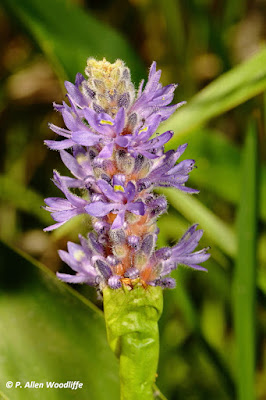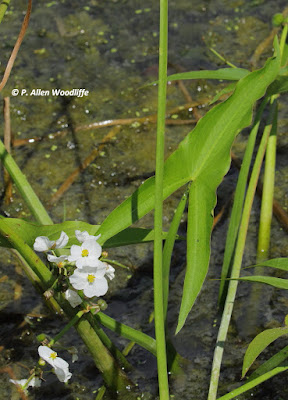Wetlands are hugely important to a healthy landscape. For example they help contain runoff from rainfall so there is less soil erosion and degradation of our lakes, rivers and streams. They recharge the ground water table which keeps water wells supplied and forests healthy. Unfortunately their benefits have been ignored by many, so the majority of them have been drained for various kinds of development. Based on soils and early surveys, it is estimated that at the time of settlement more than 66% of what is now Chatham-Kent was one type of wetland or another (marsh or swamp). By 1982 less than 4% of the municipality was in wetland. That has since dwindled further, as currently only about 4% of the entire municipality is in any kind of natural cover.
Wetlands are a fun place to explore, but the best time is in the early morning or evening, unless you like the heat! There is an abundance of plant and animal life out there, although some of it takes more than a bit of effort to find.
June is prime egg-laying month for many turtles.
 |
| Midland Painted Turtle |
The culprit? Raccoons are probably the most likely one, although skunks, foxes and opossums will take advantage of these fresh eggs as well. I remember on one occasion watching a snapping turtle laying eggs, and a raccoon was sitting right behind it, pulling each egg out of the nest hole as it was laid. It doesn't get any fresher than that!
Turtles are long-lived, so in order to keep turtle populations healthy, they only need to have a small number of eggs successfully hatch and the young reaching maturity to eventually replace the adults in the population. So even though the majority of turtle eggs are eaten, it may not do any significant damage to the overall turtle population.
The openness of the wetland landscape is great for seeing a multitude of birds. Waterbirds, including herons, egrets and terns are frequently seen.
 |
| Black-crowned Night-Heron |
 |
| Green Heron |
 |
| Forster's Tern |
 |
| Mute Swan and cygnets |
Much smaller things with wings are common, especially dragonflies. The Calico Pennant is one of the more striking dragonflies, in my opinion.
 |
| Calico Pennant |
 |
| Blue Dasher male |
 |
| Blue Dasher female |
 |
| Twelve-spotted Skimmer |
The Black Horsefly is a huge fly, with the body length up to 28mm. Fortunately it seldom bites humans, but it can be a nuisance to livestock.
This Black Horsefly was low down on a dead stalk of Phragmites, just a bit above the water. It might have ended up as a snack for a Bullfrog, which is by far the largest frog in Ontario. Bullfrogs are easily identified by their resonant 'jug-o-rum' call that you can hear from quite a distance. When you get to see one, you can tell it from the somewhat similar, but smaller, Green Frog, since the Bullfrog does not have ridges that go from behind the eye down the back almost to the hind legs. Bullfrogs are quite the vicious predator, in the sense that they will eat fish, other frogs, small snakes and even small birds.
 |
| Bullfrog |
Plants are numerous in a healthy wetland, with a constantly changing array in flower. Right now, things like Fragrant Water Lilies (Nymphaea odorata) dot the surface of wetlands, poking up through the covering of lily pads.
Pickerelweed (Pontederia cordata) is not a weed at all, but an attractive flower which pollinators such as bees like.
Arrowhead (Sagittaria latifolia) is a common plant in shallower water.
A less obvious wetland plant is Giant Bur-reed (Sparganium eurycarpum).
 |
| Giant Bur-reed, male flowers |
 |
| Giant Bur-reed, female flowers |
Tufted Loosestrife (Lysimachia thrysifolia) is found along wetland edges.
There are many, many more things to get your attention.....I encourage you to get out and enjoy a wetland!












I found your blog of great interest. Only 5% of NZ is wet lands. I'm not too sure of the history, but the early settlers also planted many twisted willows and drained much of the wet lands., as you said for stock and farming. We now have a massive project just down the road, restoring the wetlands again. It will be a long on going project, with many volunteers involved. Much 'in school' education and wetlands planting days have the schools involved.
ReplyDeleteIt is wonderful to see it beginning to take shape as it used to be.
Love and blessings, Paula,
Hi Paula....thanks for your comment. It seems to be the way of the world, unfortunately, that wetlands historically were not valued and subsequently eliminated. Fortunately there is a greater understanding of them now, so some positive restoration efforts are happening.
ReplyDelete